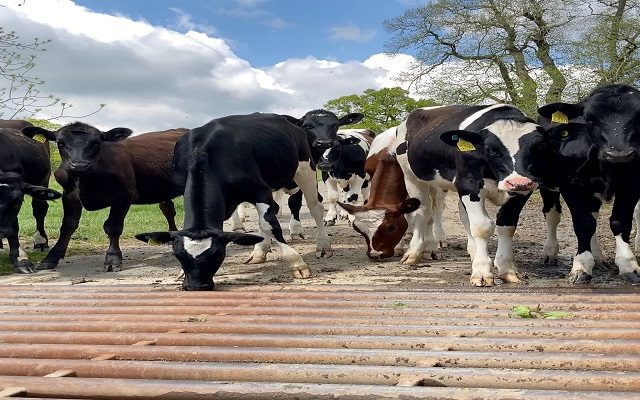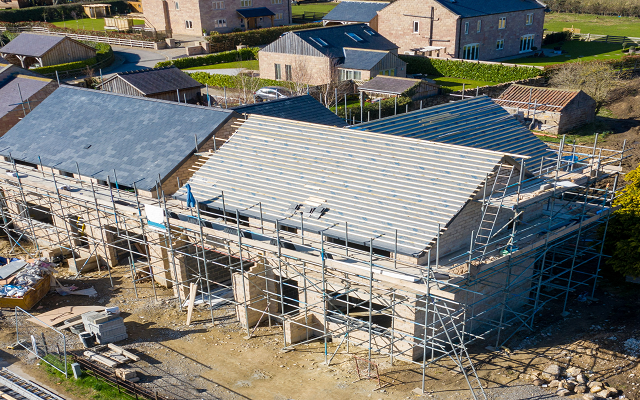In the know: What NPPF reforms could mean for land managers
The National Planning Policy Framework (NPPF) sets out government’s planning policies for England and how these are expected to be applied at a local level.
On 31 July 2024, the government put out to consultation a series of proposals for revisions to the NPPF. The consultation period ends on 24 September 2024.
The focus of the proposals is on boosting the national supply of housing and other development needs. Several of the changes reverse amendments to the NPPF which were introduced by the previous government in December 2023.
The plans have implications for rural landowners, as they emphasise that local authorities need to identify more land which can be released for housing and other uses. This shift is likely to present new opportunities for landowners interested in releasing their land, as councils will inevitably have to update their Local Plans to reflect the revised NPPF when adopted. Farmers with land near towns and villages may also be approached by developers.
More development in the countryside may lead to worries about the loss of agricultural land and the impact on rural communities. However, it could also lead to diversification opportunities for rural land managers, for example through recreational or tourism activities.
The changes of most relevance to landowners, farmers and other rural land managers are as follows:
Housing targets and land supply
The government has set a headline target of delivering 1.5 million new homes over the next five years, which will only be possible if sufficient land is allocated for development.
It will become mandatory to calculate housing need based on a new standard method, which is likely to lead to increases in existing targets at a regional level.
The December 2023 NPPF softened housing land supply requirements, removing the need for Local Planning Authorities (LPAs) to monitor their position if their Local Plan was adopted less than five years ago and applied a reduced requirement to demonstrate just a four-year housing land supply in certain circumstances. The proposed changes in the NPPF24 restores the requirement for all LPAs to demonstrate a five-year housing land supply and also proposes to remove the ability to offset previous over supply of housing against upcoming supply.
Grey belt and green belt
One of the biggest proposed changes, would see the introduction of a ‘grey belt’ designation. Grey belt is defined as areas of Previously Developed Land (PDL) and/or land that makes a “limited contribution” to the green belt purposes. This would mean it includes land that would:
a. Not strongly perform against any green belt purpose; and
b. Have at least one of the following features:
i. Land containing substantial built development, or which is fully enclosed by built form
ii. Land which makes no or very little contribution to preventing neighbouring towns from merging into one another
iii. Land which is dominated by urban land uses, including physical developments
iv. Land which contributes little to preserving the setting and special character of historic towns
Examples suggested by the government of the type of land which could be redefined as grey belt includes old petrol stations and carparks, “poor quality and ugly areas” such as wasteland, or land adjacent to existing settlements and roads.
The consultation proposes strengthening the presumption in favour of brownfield development and the government is also consulting on whether to amend the definition of brownfield land to include hardstanding and glasshouses which would be a radical overhaul of policy.
It effectively suggests introducing a ‘sequential test’ for local authorities when preparing and maintaining their Local Plans. They should give first consideration to development on previously developed land (brownfield) in sustainable locations, then consider grey belt land in sustainable locations which is not already previously developed, and only then consider other green belt locations.
A set of ‘golden rules’ would be applied to major development on any land released from the green belt, to ensure it benefits both communities and nature:
a. for housing schemes, the provision of at least 50% affordable housing (subject to viability), presumably regardless of other targets for affordable housing set in the development plan;
b. relevant infrastructure improvements; and
c. provision or improvement of green spaces accessible to the public.
The draft changes state that LPAs should undertake a green belt review where they are unable to meet housing, commercial or other needs without altering green belt boundaries, again reversing December 2023 changes.
Design code
The December 2023 NPPF added references to ‘beauty’ and ‘beautiful’ in relation to well-designed development. Due to concerns about subjectivity, these changes are proposed to be reversed, emphasising the use of the National Design Guide and National Model Design Code as the primary basis for the preparation and use of local design codes.
Commercial development
The changes proposed state that LPAs should identify appropriate sites for commercial development “which meet the needs of a modern economy.” The government places particular emphasis on new commercial facilities that are adapted to the needs of a modern economy, including suitable locations for laboratories, gigafactories, data centres, digital infrastructure, freight and logistics.
Renewable energy
The consultation proposes that onshore wind is re-integrated into the Nationally Significant Infrastructure Programme regime and to set the threshold at which onshore wind projects are determined as nationally significant at 100 megawatts; and increase the same threshold for solar projects to 150 megawatts.
LPAs will also be expected to actively “identify suitable areas for renewable and low carbon energy sources, and supporting infrastructure, where this would help secure their development” instead of the previous wording which was to “consider identifying.” Furthermore, it says decision makers should give “significant weight” to a proposal’s contribution to renewable energy generation and a net zero future as we have already seen in this government and the previous government’s move towards consenting more large-scale renewable energy projects particularly in the green belt.
Strutt & Parker has national Planning specialists who can support our wider Rural team to help you to unlock the planning potential of land and buildings.
This article forms part of our ‘In the Know’ series which sees Strutt & Parker experts share insight and advice on how farms and estates can improve their business resilience, both from an economic and environmental perspective.






